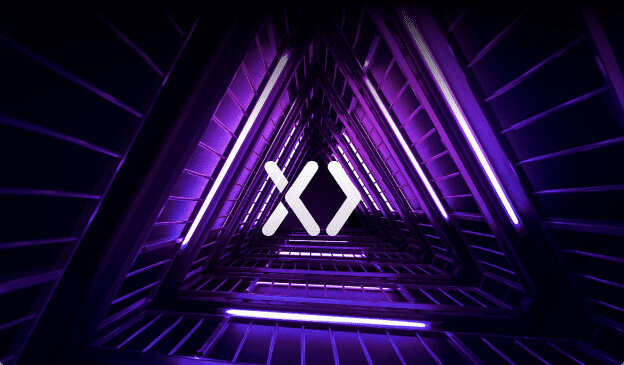

Written by:
Ann Brown
Restful API vs. GraphQL
Pros and cons of RESTful API vs GraphQL to help you determine which one is best for your needs
If you’re buying a car, you’ll want to take a look at the engine or at least have some understanding as to how this engine differs from all the others. You could say the same for your website. To appreciate how one CMS or DXP differs from another, you need to understand how it’s built. Let’s pop the hood and take a look at two widely used architectures: RESTful API and GraphQL. For the last several years, REST has been the popular architectural style for designing APIs (application programming interfaces). Then Facebook introduced GraphQL in 2015, which is gaining popularity. Both retrieve data but they do so in different ways. Like any great debate, there are benefits and drawbacks to using both. In this article, we will discuss the pros and cons of RESTful API vs GraphQL to help you determine which one is best for your needs.

Expresia’s extensive and elegant RESTful APIs are the core of our platform’s architecture and one of its most powerful features.
APIs
What are the benefits of using APIs?
First, let’s discuss the benefits of using Application Programming Interfaces (APIs). There are myriad benefits to using APIs, here are a few of the big ones:
- Saves time and money: APIs allow developers to implement existing functionality without having to build applications from scratch. And when you reduce the development time it takes to create an application, you reduce costs.
- Streamlines your digital assets: APIs connect your individual software solutions—such as your CRM, marketing automation and/or eCommerce software—together so they can interact with one another.
- Improves customer experience: APIs allow developers to create effective ways to interact with customers, meet specific expectations, and create personalized experiences.
REST(ful) API
What is a RESTful API?
REST (representational state transfer) is a set of constraints that dictate how an API (application programming interface) should work. It's an architectural style used in web services, applications and software. A RESTful API is an API that adheres to those REST architecture constraints. It uses HTTP requests to access and use data.
According to IBM, REST (also known as RESTful) APIs “provide a flexible, lightweight way to integrate applications, and have emerged as the most common method for connecting components in microservices architectures.”
What are the benefits of using RESTful API?
- Reduces the amount of redundant work with an efficient workflow that allows for simplified calls.
- The flexibility and ease of use of a graph-based API, with the power and data integrity of traditional relational data.
- Simplified workflow with options to combine Hydration and Filtration request calls.
- Allows consistent API calls from third parties.
- The API integration with external web APIs is simple compared to other platforms, which saves developers time when integrating their customers’ backend systems.
- Multiple ways to use the base API for data and actions specific to your particular application.
What are the benefits of using Expresia REST API?
There are multiple benefits to using Expresia REST API, which we discuss in detail here, but these bullet points cover some of the highlights
- Unlike most CMSes, Expresia is built entirely using its REST API—all data interactions for both the backend of the platform and the websites are created with REST API.
- Expresia REST API has nearly 100% coverage of its data structures, whereas other platforms typically expose REST APIs for specific use cases and datasets.
- Not all REST APIs are created equal. Expresia is built using a unified, auto-documented API that handles more than 180 different elements in a consistent manner—saving developers time, making it easier to support and ensuring long-term sustainability.
GraphQL
What is GraphQL?
GraphQL is a query language for working with APIs. The language enables you to make HTTP requests and get responses. With GraphQL, you can retrieve data from several resources using a single request. While it is rising in popularity, it is very difficult to implement well.
What are the benefits of using GraphQL?
- Fetch data with a single API call. REST is centered around individual endpoints, so to collect all needed data, a developer has to combine multiple endpoints. GraphQL focuses on the task itself, which means a developer can request the necessary data with only one API call.
- No over- and under-fetching problems. REST responses are known for either containing an excessive amount of data or not enough of it, creating the need for an additional request. GraphQL solves this problem by fetching the precise data during a single request.
What are the drawbacks of using GraphQL?
- It’s overkill for small applications and very difficult to implement well. While GraphQL is the right solution for multiple microservices, REST architecture is appropriate for more basic applications such as resource-driven apps that don’t need flexible queries.
- The potential for performance issues with complex queries. It’s arguable which one performs better: GraphQL simplifies the number of requests an average application requires but REST has more robust caching capabilities.
- While GraphQL provides some API security measures, they are not as mature as REST, which offers several ways to enforce the security of APIs.
While GraphQL and REST both have their advantages and disadvantages, GraphQL is not a replacement for REST. Expresia’s extensive and elegant RESTful APIs are the core of our platform’s architecture and one of its most powerful features. The entire Expresia FaaS—including our CMS and eCommerce engine—is fully integrated on our RESTful API engine, giving you the freedom and flexibility to easily innovate and push the limits of your creative and technical vision.
Featured news
Grow your business today

Book a demo
In as little as 30 minutes, discover how to future-proof your business.
.jpg)






